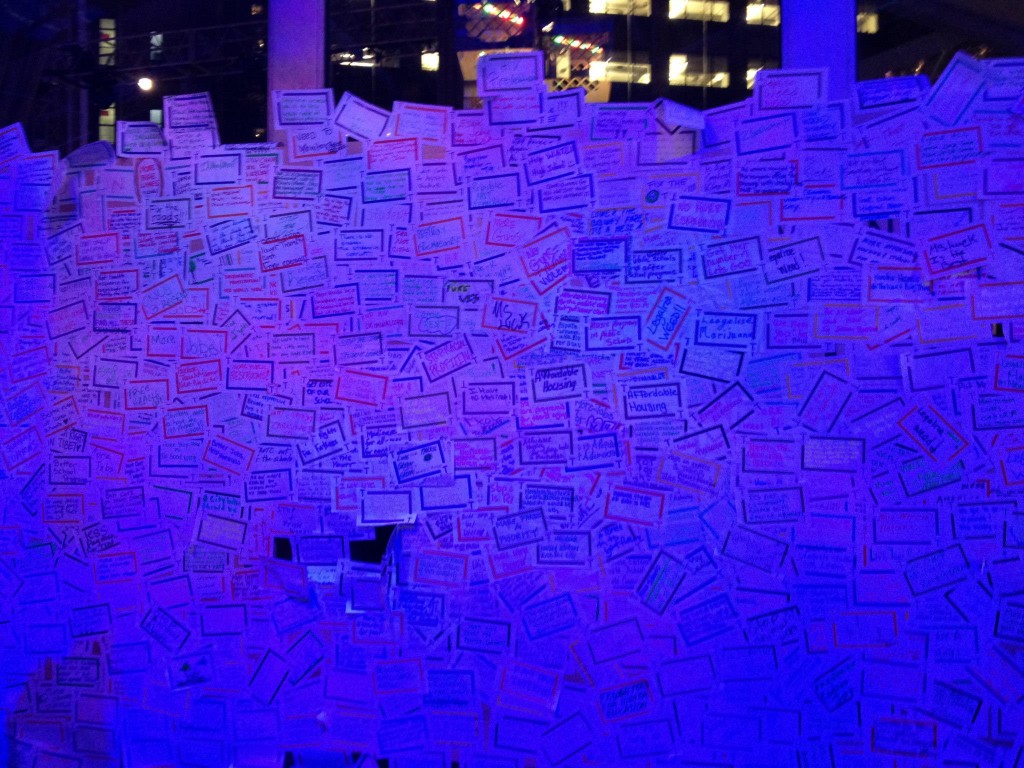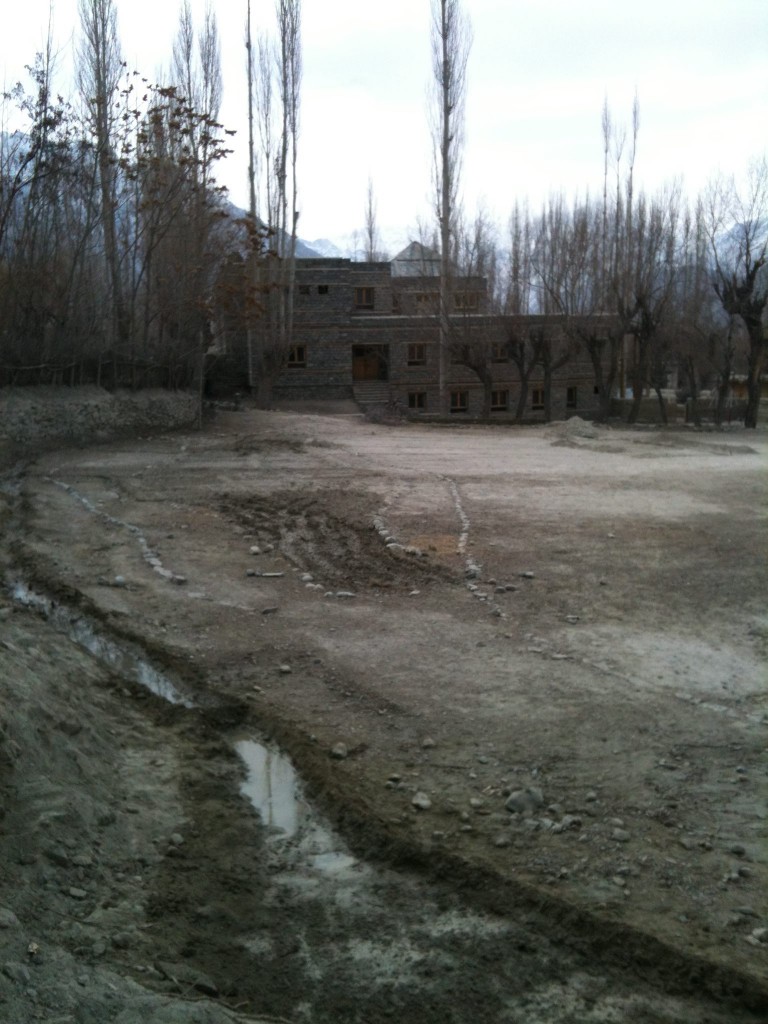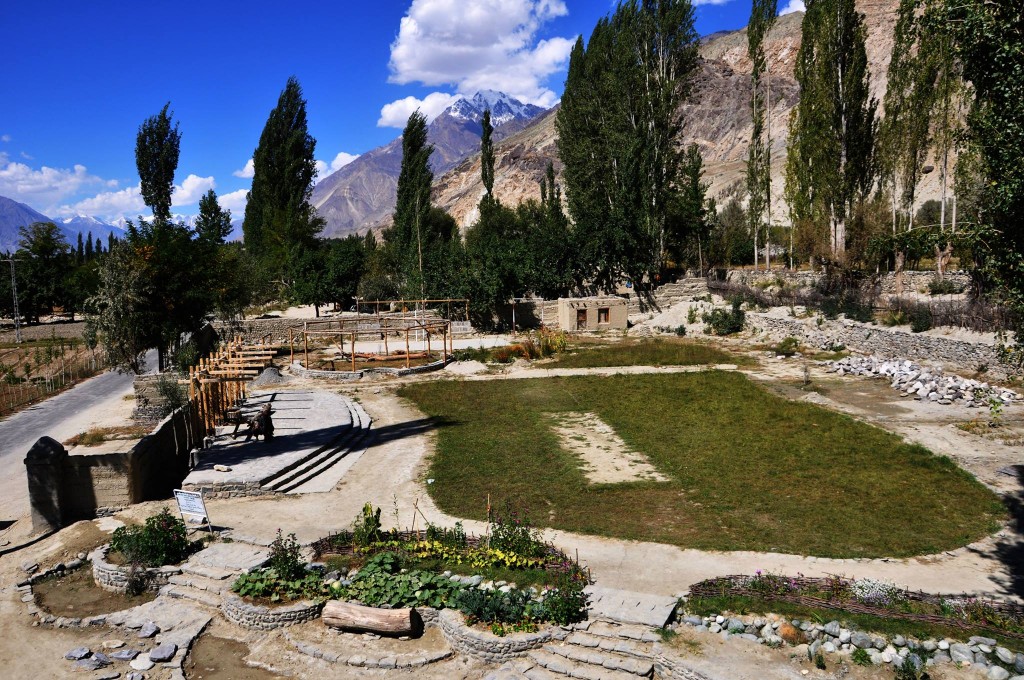Lost in Trans-lation
Posted by on November 25, 2013‘Designers,’ she said wryly, as everyone else around the table raised their brows, rolled their eyes, nodded their heads, or executed a combination of two.
This was at a discussion table at Talking Transitions, a month-long series of town hall style seminars that aim to help transition New York City’s mayor-elect Bill de Blasio into office. The aforementioned woman was talking about an ill-designed pier in a Manhattan-based waterfront condo project that had failed to be of any use to watercraft because of its ‘futuristic’ angles.
It looked beautiful, of course.
For someone who has switched gears from journalism to design, this was not the vote of confidence I was looking for outside the confines of my 12th floor swanky design studio at Parsons. Architects were disparaged at that table too, as activist after activist shared horror stories of ill-designed projects in public spaces. They all agreed that this was due to two critical failures – designers’ inability to consult and work with users of their products early on in the design process, and sacrificing utility for aesthetics. The angled piers, for instance, provided sweeping views of the Hudson, but served little purpose besides that.
It’s a global design malaise, of course. A recent public program in Rio “to bring architects together with favela residents and public officials, promised collaborative solutions to redevelopment,” according to a recent New York Times article that reads more like a laundry list of design missteps in the rapidly transforming city. According to the article, residents consulted said “they wanted clean streets and paved roads. The city decided instead to construct the cable car, along with a funicular and a cultural center commemorating favela life, all projects requiring evictions.” [Emphasis added]
It’s not that designers aren’t aware of their shortcomings – we have spent a better part of the semester talking at length about “co-designing,” “community buy-in,” not treating stakeholders as end consumers, etc. Awareness, however, appears to amount to little just yet. Why do designers continue to shoot themselves in the foot?
As transdisciplinary design evolves into a professional discipline, it’s carrying into its reservoir the sediment of all professions before it, whose excesses, ironically, it sought to rectify in the first place – jargons, inside jokes, buzz words, counter buzz words, paraphernalia, apparatus and pet peeves. Put together, they form an impermeable wall that separates transdisciplinary designers from outsiders, just like any other profession.
Nowhere was this more obvious than in my first few months at graduate school. The sheer amount of jargon used, post-its consumed, sharpies devoured, and buzz-words frowned upon left me, quite frankly, dizzy. I felt an alienation towards the discipline that was not very different from what the activists felt at that table at Talking Transitions.
This would have probably mattered less if I were a Wall Street broker, or a Julliard student – they haven’t taken on the mantle to resolve the world’s ‘wicked problems.’ Transdisciplinary designers have. And that’s why we need to be introspective. The practice appears to be increasingly ‘professionalized’ – in part because of the need to be more eligible for jobs, or to convince employers that we matter – but isn’t that counterintuitive to the idea of a trans designer? One that could reach out to other professions and stakeholders and draw them, through design, to a table where they could collaborate and resolve wicked problems? One who can speak all languages, but be understood by all? One who breaks down the walls between professions, and provides a vocabulary for them to work with each other?
Before I lost all hope, I came across an example of a trans-design project in Shigar Valley in Pakistan. A commission to landscape a secondary school garden took a California-based landscape artist, Tahereh Sheerazie, to a small village in northern Pakistan. During her multi-year residency, she taught drawing, mapping, drafting, surveying, and research skills to five girls from the village who ‘co-designed’ the garden, but also oversaw its realization, and would be its future caretakers.
The project not only transformed a rubble-strewn field into a terraced, sustainable teaching garden with local fruit trees, vegetable patches, composting facilities, a cricket pitch, and an amphitheater for community, but also transformed the lives of those five girls, the adjacent school, all its students, and the entire community. I have yet to see a project so simple, yet so transformative.
Meanwhile, not a single post-it was used, nor any buzz word uttered, in the multi-year process.
Tahereh may not have been a trans-designer but her work seems a lot like what we aspire to do – act, transform, engage communities, improve well-being, design sustainable solutions. Admittedly, the process could have used a bit more visual sophistication or engagement tools, but on the whole, it does not lose any of its transformative impact because of that ommission.
The school garden project may not be featured on the glossy pages of Fast Design, but through her dedication to the project, inclusiveness in her approach, and simplicity in its execution, Tahereh has shown me that way forward is by opening up to those I am working with, rather than walling myself in my own world.


